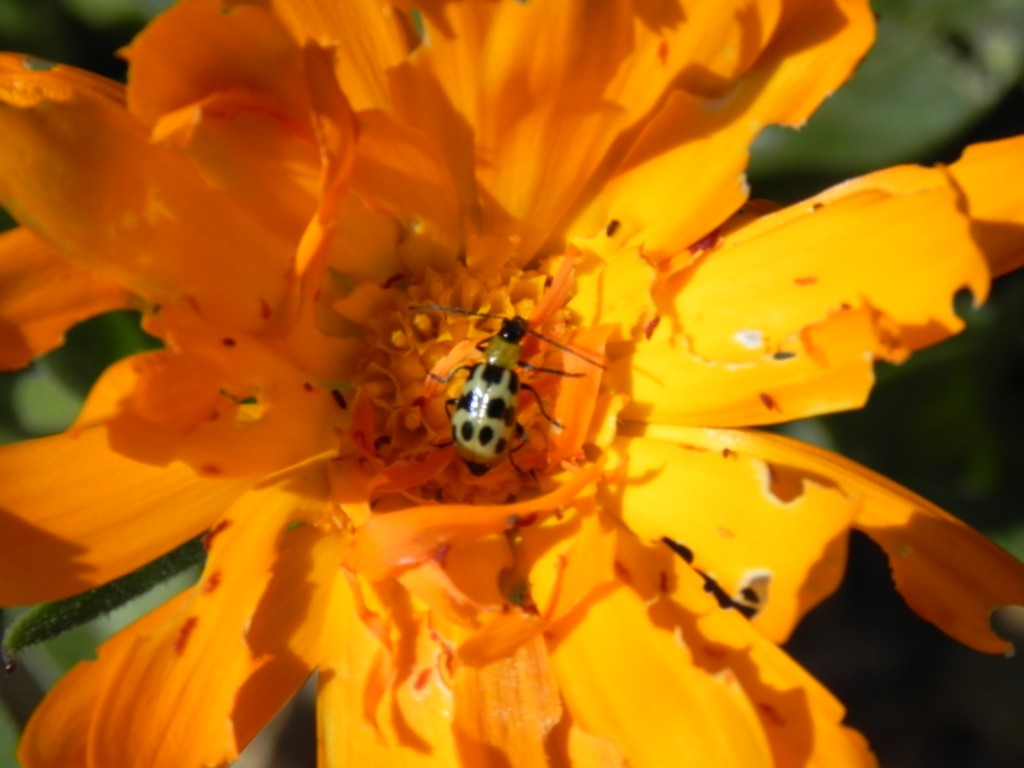
Besides having to water our entire half-acre by hand due to watering restrictions, I’m having a war with the back and green “ladybug” commonly known as the Western spotted cucumber beetle or Diabrotica. This bug is downright evil. The adults attack asparagus, beans, eggplants, potatoes, tomatoes, peas, squash, corn, cucumbers, and melons. Even worse for home gardeners, it attacks blooms like roses, poppies, and dahlias. It especially likes the color yellow. Not only do they destroy the flowers and fruit, their larvae eat the roots of plants.
The cucumber beetle carries bacteria in their intestines that is spread from plant to plant. Symptoms of these diseases are wilting, browning of leaves and stems, and eventually the plant will die.
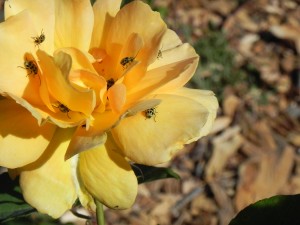
When I wrote about the dreaded cucumber beetle a few years ago, I thought they had no natural predators. Even my hens would not eat them. Since then, I’ve discovered that the Tachnid fly lays her eggs in the body of insects that are her hosts. One of them is the cucumber beetle. Soldier beetles, parasitic nematodes, and braconid wasps also are enemies to the cucumber beetle. Lacewings and ladybugs eat their eggs and bats swoop down at twilight, and catch the flying cucumber beetle as it searches for a place to spend the night.
Some plants actually repel the cucumber beetle. It helps to place these plants throughout your garden: calendula, catnip, goldenrod, tansy, and nasturtiums.
I don’t use toxic sprays in our garden or on flowers (we have honey bees that we like to keep around) and I’m attached to them. But there are a few “home remedies” that have worked for me in discouraging the damage caused by the spotted cucumber beetle.
- Wood ashes can be put in 3” trench around plants to discourage the growth of larvae.
- Mulch deeply to smother the emerging larvae. Spread onion skins on the soil around plants.
- Put squares of aluminum foil under plants. The pest becomes confused by the reflection and doesn’t which way is up.
- A reader suggested putting nematodes in the soil around plants to destroy the larvae. In research, this has been found to be affective in research, but I haven’t myself tried it.
- Another reader asked about using neem oil on the ground around infested plants. I have not tried this but new tests are coming out that show neem oil is not only a repellant but may destroy larvae in the soil.
- Plant coreopsis around your garden. Cucumber beetles migrate to these pretty yellow flowers. Go around each morning and knock them into a bucket of soapy water. You’ll be surprised how this will reduce the numbers in your garden.
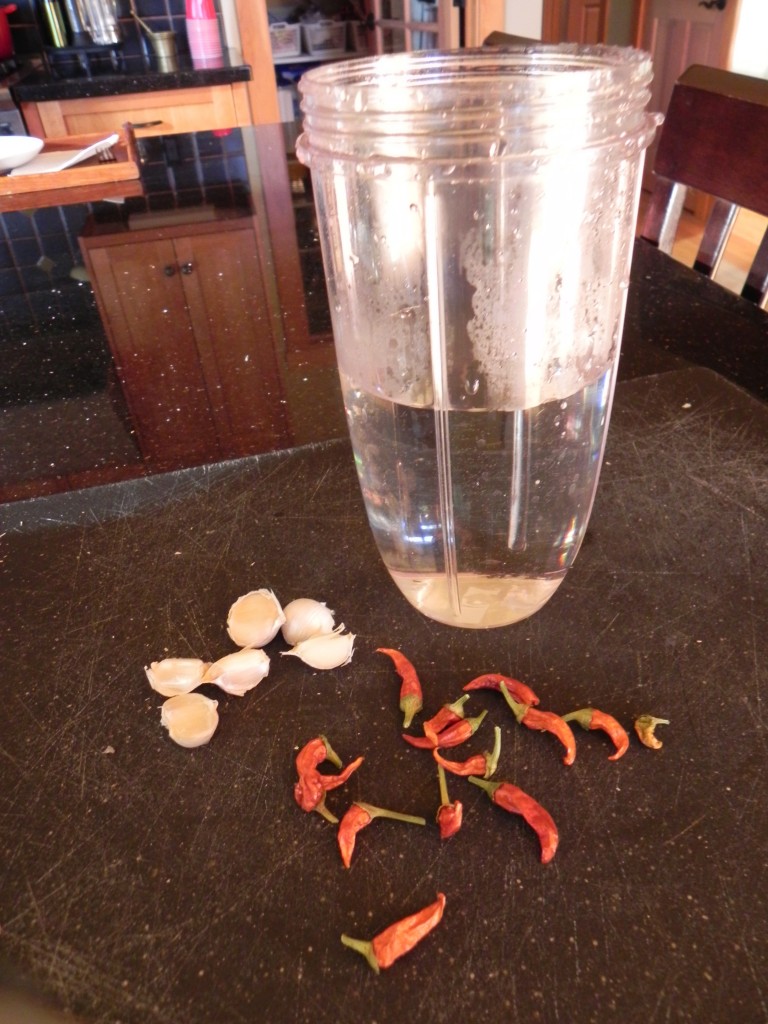
I am now using a “home-made” concoction that was suggested to me by a reader. I’ve been spraying plants at dusk, when bees are not present. I do not spray inside flowers that have pollen. It seems to be working and at least reducing the number of adults that are spending their days decimating my summer blooms. Let me know if you have found another “cure” for this most destructive and annoying critter. Whatever you do, don’t endanger our beneficial insects. They are in your garden (whether or not we see them) doing their job. We need to protect them.
Recipe for Cucumber Beetle Spray
CUCUMBER BEETLE SPRAY-Kills and Repels
- 3-6 garlic cloves
- 6 small hot peppers or 1 Tbls. red pepper flakes
- 1 cup hot water
Soak overnight then mix in blender. Put through a sieve. Dilute with 3 more cups water and put in spray bottle. This is very strong! Be careful!


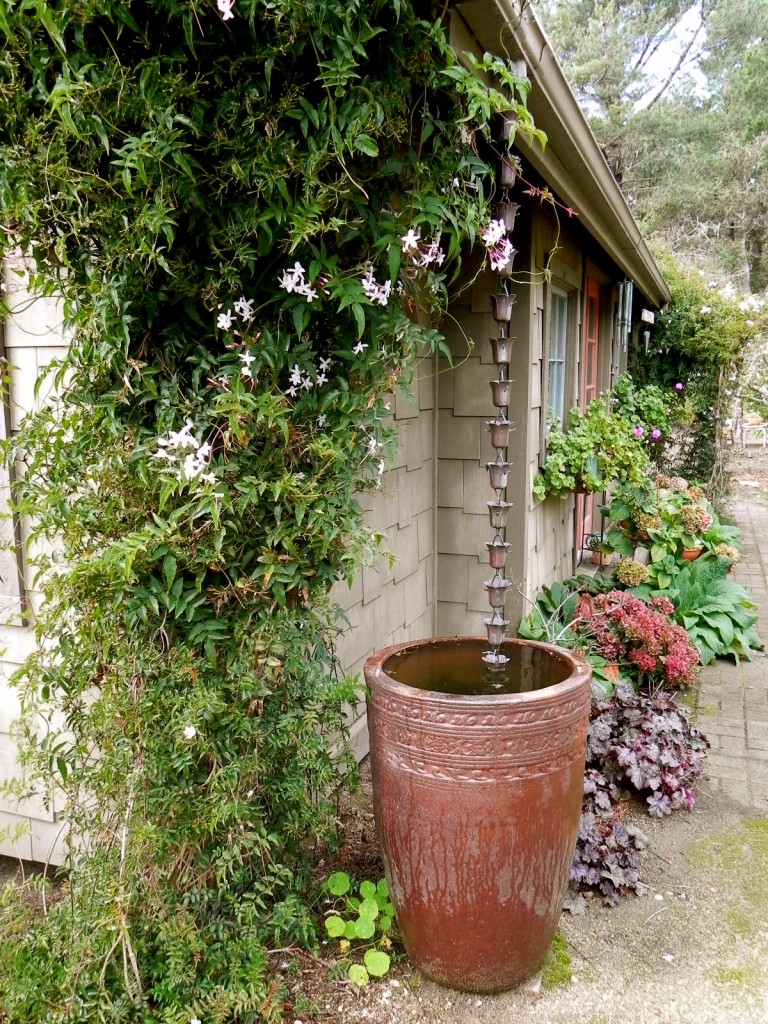
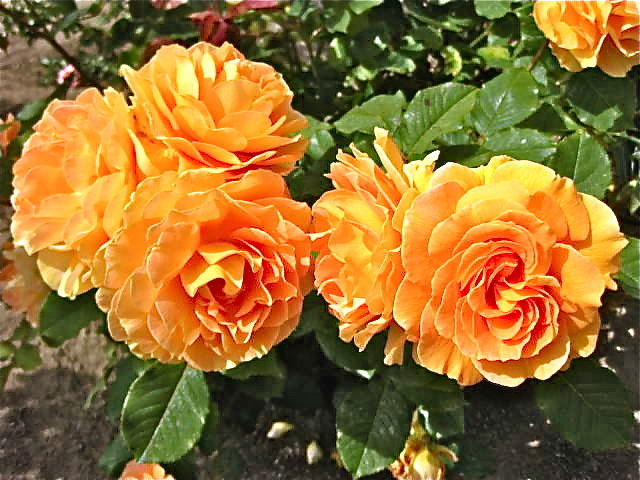
Comments
Comments are closed.